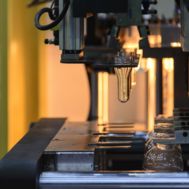
Industries

Applications

Cookie Consent
Cookies are used for statistical purposes and to improve the site.
Cookies will be used after you click "Accept" or if you continue using Dynisco.com
To find out more please review our Privacy Policy.
Pressure is a key parameter in polymer processing, influencing dimensional stability, throughput efficiency, and equipment safety. Whether the process involves extrusion, molding, or compounding, precise melt pressure monitoring ensures product quality and operational reliability.
At Dynisco, we have over six decades of expertise in melt pressure sensing. From early mechanical gauges to modern digital sensors, our innovations have shaped the way processors monitor this critical variable. This article outlines the key melt pressure measurement technologies available today, including traditional strain-gauge sensors, mercury-free options, and fill-free capacitance-based designs.
This foundational design remains central to many current pressure sensors.
While mercury has been favored for its thermal stability and pressure fidelity, evolving health and environmental regulations have prompted the development of safer alternatives. Dynisco offers several non-mercury fill options:
These fills allow processors to align sensor choice with process temperature, compliance requirements, and environmental priorities.
Some applications demand a fluid-free solution. The Vertex® Series eliminates fill fluids entirely by employing capacitance-based technology.
Vertex sensors represent a leap forward in combining safety, performance, and environmental stewardship.
Dynisco organizes its melt pressure solutions into specialized sensor families, each engineered for specific use cases:
These sensor families enable processors to balance accuracy, regulatory compliance, durability, and budget constraints.
Melt pressure measurement technologies are widely deployed across polymer sectors:
Accurate pressure monitoring in these applications reduces scrap, improves throughput, and enhances product consistency.
Innovation continues to drive the field forward. Emerging trends include:
Mercury-free standardization: Regulatory and environmental pressure is accelerating adoption of safer fill alternatives.
Fill-free expansion: Capacitance sensors like Vertex will gain traction in safety-critical and sustainable applications.
Digital integration: Enhanced connectivity with plant MES, SCADA, and cloud platforms for real-time analytics.
Predictive diagnostics: Embedded sensor intelligence to detect anomalies and preempt failures.
Rebuildable designs: Extended service life through user-serviceable components.
Dynisco remains committed to meeting the industry's growing demands for performance, compliance, and sustainability.
Melt pressure sensing has evolved from analog gauges to a sophisticated portfolio of digital, accurate, and safe sensors. With solutions ranging from high-temperature NaK-filled transducers to fill-free Vertex® technology, Dynisco offers a tailored approach for every polymer process.
Our sensor families — SPX, Vertex, PTX, MDX, and ECHO — reflect our commitment to innovation, reliability, and regulatory readiness. With each advancement, we aim to provide processors with greater insight, higher safety, and increased operational control.
Accurate pressure data isn’t just a number; it's a strategic asset. When measured precisely and interpreted correctly, it empowers manufacturers to minimize risk, improve yield, and future-proof their operations. Contact us today if you have any questions not answered below.
Fill sensors use fluids like mercury, HTF, or NaK to transmit pressure to a strain gauge. Fill-free sensors (e.g., Vertex) use capacitance-based measurement with no internal fluid, eliminating contamination risk and improving response.
Use NaK-filled sensors for very high-temperature processes (above 350°C), such as those involving engineering polymers like PEEK. HTF is better suited for general extrusion applications with lower temperature requirements.
Fill-free sensors eliminate the risk of contamination and reduce maintenance. They are ideal for food, medical, or environmentally sensitive applications requiring high accuracy and safety.

38 Forge Parkway,
Franklin MA 02038
+1 508 541 9400
Pfaffenstr. 21, 74078,
Heilbronn, Germany
+49 7131 297 0
Lot 3615, Jalan SM 6/8
32040 Seri Manjung, Perak, Malaysia
+605 6884014